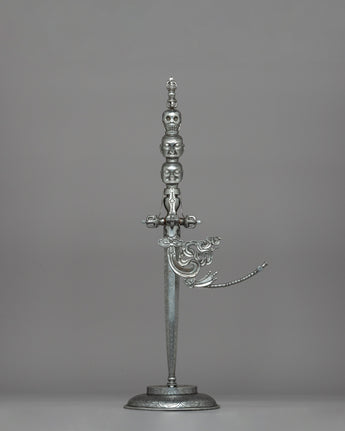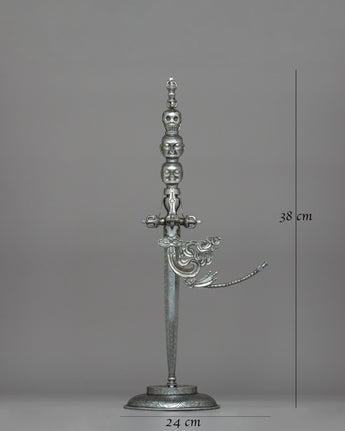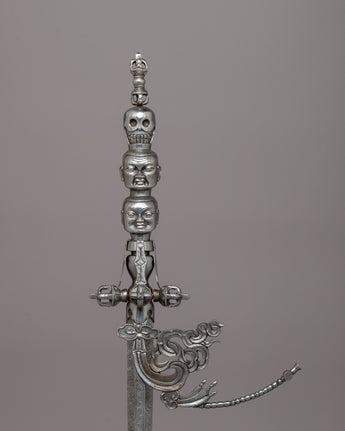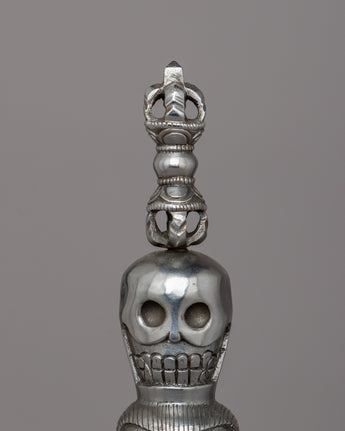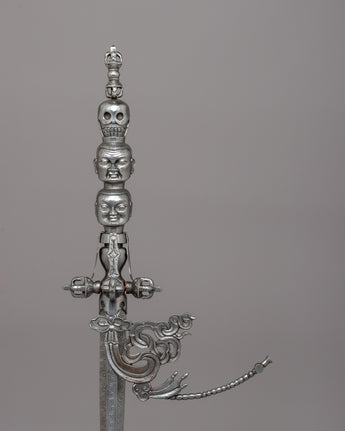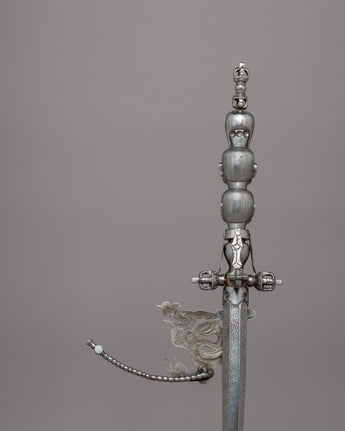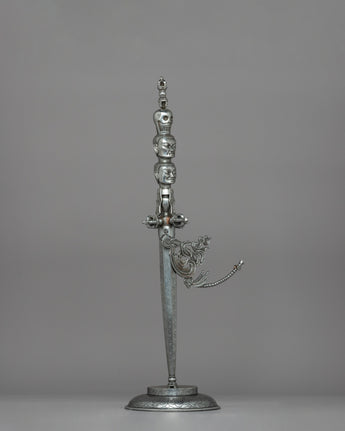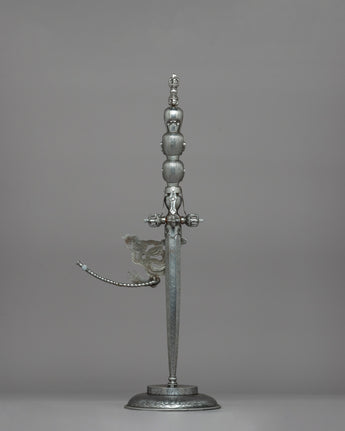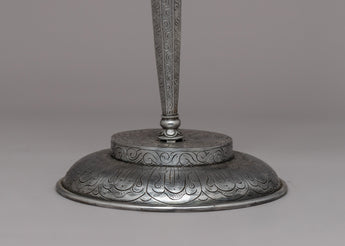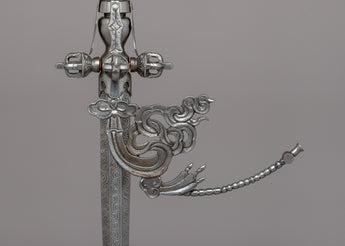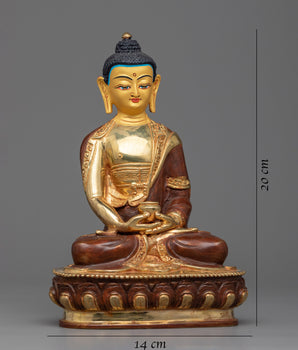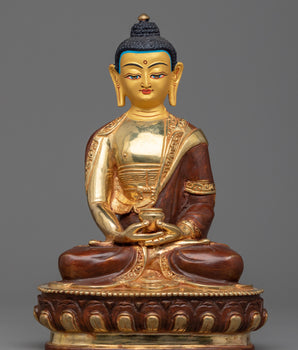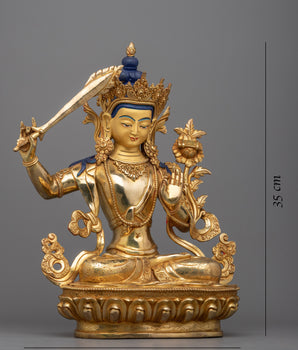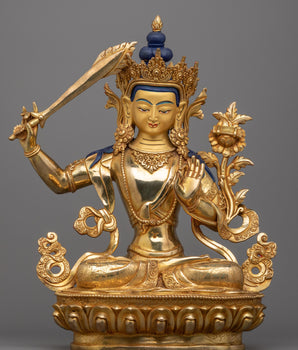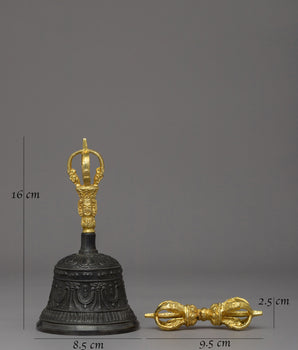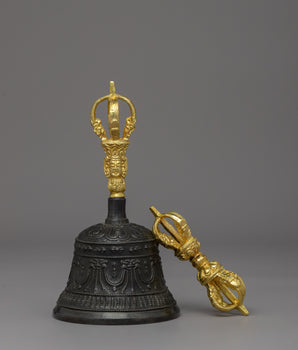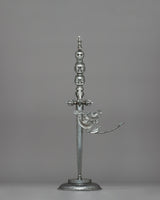
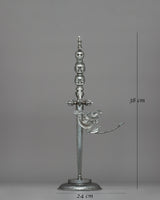
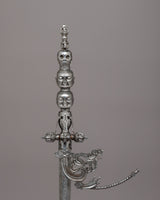
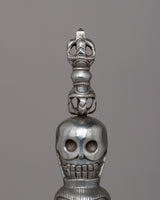
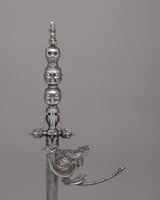
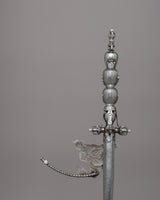
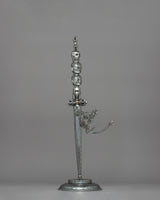
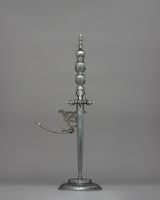
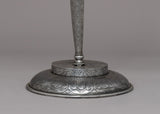
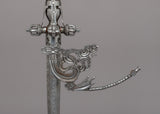
Iron Khatvanga for Tibetan Buddhist | Sacred Vajrayana Ritual Staff

100% AUTHENTIC

HANDMADE

FREE SHIPPING
Iron Khatvanga for Tibetan Buddhist - Sacred Vajrayana Ritual Staff
---------------------------------------------------
Size: 38 cm(Height) x 24cm (Width)
Weight: 1.77 kg
Material: Iron Body
---------------------------------------------------
About Our Ritual Item :
This historical Vajrayana Buddhist ritual staff, known as the Iron Khatvanga for Tibetan Buddhists, represents transformation, strength, and wisdom. With three skull heads that symbolize the transcendence of individuality and the transience of existence, it is 38 cm tall and 24 cm wide. In Tibetan Buddhism, the Khatvanga is a venerated instrument representing the combination of wisdom and compassion on the path to enlightenment. It has historically been connected to Padmasambhava and tantric practitioners.
The elaborate engravings and symbolic patterns, including a delicately sculpted trident and vajra handle, highlight expert artistry and spiritual depth. In addition to being a beautiful piece of Buddhist altar décor, this Khatvanga is a significant ceremonial item used in ritual ceremonies, initiations, and meditation practices. Its strong iron body makes it a timeless addition to any monastery, sacred area, or individual meditation setting.
The Khatvanga is a guardian staff member in Tibetan Buddhism who is thought to help with profound meditation and keeping off evil energy. This exquisitely created item reflects the strength, wisdom, and divine protection essential to Vajrayana practice, whether utilized in tantric ceremonies or displayed as a symbol of spiritual devotion. Having a tremendous Buddhist tradition, this artifact is necessary for practitioners, collectors, and spiritual searchers.
Introduction To The Khatvanga :
Khatvanga is a stick with a skull on top commonly used in Tantric rituals. It is also depicted in the hands of the oldest known Tantric pictures in the Indic world. It comprises of a short stick topped by a single skull from which a vajra emerges.
In the Tantric Buddhist environment, the khatvanga had a very profound meaning. At its most basic level, it represents the opposite-gender counterpart of the equal or close deity who carries it.
Both Tsang Nyon Heruka and Padmasambhava are renowned for holding khata khatvanga staff on their left shoulder.
How to set up your own Buddhist Shrine?
Find a clean, quiet, and uncluttered spot
Please set up an altar table, and cover it with an altar cloth that calls to you
Place your sacred item at the center


